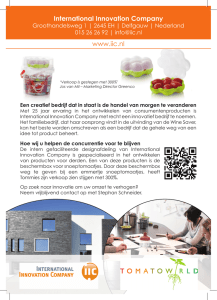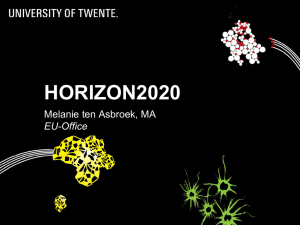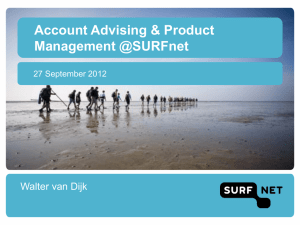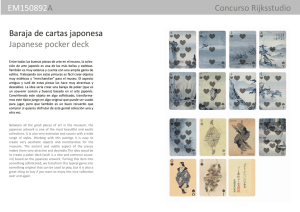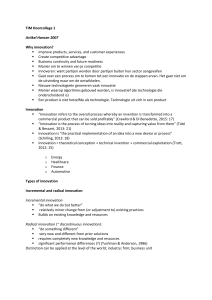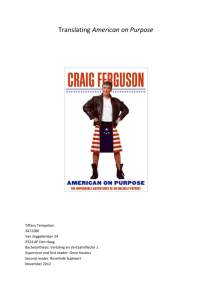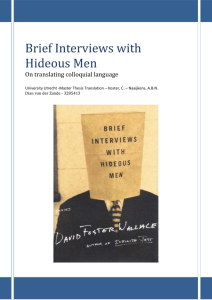The many faces of innovation in healthcare
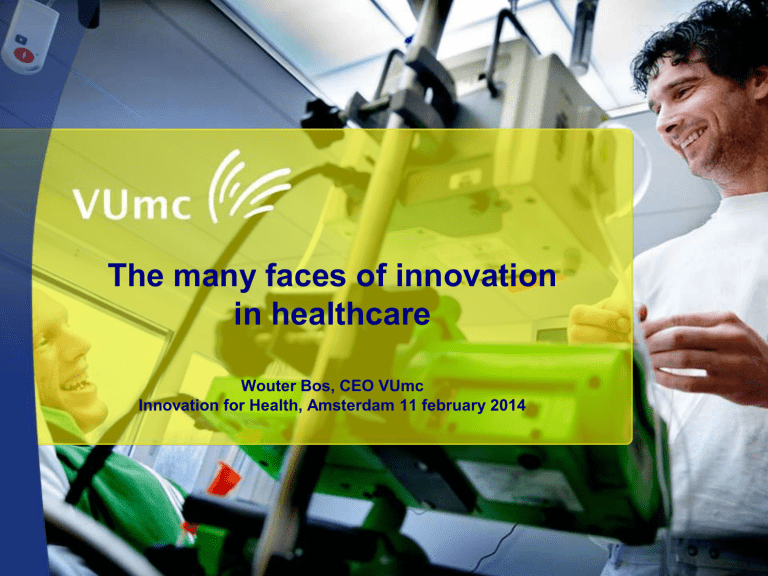
The many faces of innovation in healthcare
Wouter Bos, CEO VUmc
Innovation for Health, Amsterdam 11 february 2014
The happy faces of innovation
2
Some other faces of innovation
3
Innovation and costs: why would it work this time?
zorgkosten nationaal inkomen jaren
4
Innovation and costs: real life overtakes theory
5
Innovation and costs: why would it work this time?
“If G-20 governments do not change their age-related health care spending, their credit ratings could be at risk within the next decade, claims a recent report by Standard and
Poor's. With growing elder population, increased age-related spending, ballooning national debt and no reform, the downgrades would begin as soon as 2015 and "would include a number of highly rated sovereigns." When the full impact of aging population kicks in around 2020, "the projected downward transition in sovereign ratings would then dominate along [the] entire rating scale."
6
What do Pompe/Fabry and modern targeted medicine (e.g. gene therapy) have in common?
technological revolutions
“desperate cases”
small numbers of beneficients
high costs
often small or marginal outcome improvements
9
What’s new?
10
Would this help?
“ Een harde norm om de kosten en baten tegen elkaar af te wegen ontbreekt in
Nederland. In Groot-Brittannië bestaat die al wel. Daar mag een extra levensjaar dankzij een medicijn hooguit 37.000 euro kosten. Preciezer gaat het om QALY’s (quality adjusted life year). Dat zijn levensjaren waarin ook de kwaliteit van leven is verwerkt. In 2006 en 2007 adviseerde de Raad voor de
Volksgezondheid en Zorg om in Nederland een maximum van 80.000 euro voor een QALY vast te stellen. Voor elke patiënt met de milde variant van de ziekte van Pompe kost een QALY 15 miljoen euro. “Onacceptabel”, schrijft het
CvZ.”
Vemurafenib bij melanoom (huidkanker); mediane behandeling 5 maanden á 8471 euro per maand
Nab-p bij alvleesklierkanker; 50.000 dollar bij 54 dagen levensverlenging
11
COSTS: a major issue
The Melanoma Example
2012
• Ipilimumab: 4 injections in 3 months: 88.000 EUROS
– All melanoma patients are candidate (no biomarker!)
• Vemurafenib for BRAF-mutated: 6 months 56.000
– 50% will not progress: another 3 months: 81000 EUROS
– 50% will not progress: another 3 months 112.000 EUROS
– At progression: eligible for ipilimumab: add 88.000
2014/2015
• Targeted: Dabrafenib + Trametenib : > 100.000 Euros
• Immuno: MK-3475 or Ipilimumab + Novolimumab: > 150.000 Euros
• Targeted combo’s + Immuno-combo’s : > 300.000 Euros ?
12
The Disneyland Paradigm
In entertainment and in health care you pay up front
• What if:
– Everybody should have the right to go to Disneyland during the last year of life
– Disneyland tickets are 150.000 Euros
• What will society do?
– Provide tickets at this price with equal access for all
– Demand price that would allow equal access for all
Of note: in 2022 the whole current health care budget in India could be spent on dealing with diabetes type II management alone
13
And now for something completely different:
suppose this is all about you or your loved ones
14
The Bermuda Triangle of New Targeted medicine high costs small number of patients
Promise low marginal outcome improvement
15
My message to you (1)
Innovation can and will make great things possible….
But it won’t solve our cost problem….
It will probably even intensify our dilemma’s on solidarity
16
My message to you (2)
A possible way out:
1. Reduce waste before you reduce entitlements
2. Talk value rather than outcome
3. Involve the patient
17
My message to you (3)
Don’t leave this to politicians and insurers
Do it to them before they do it to you
18
19
